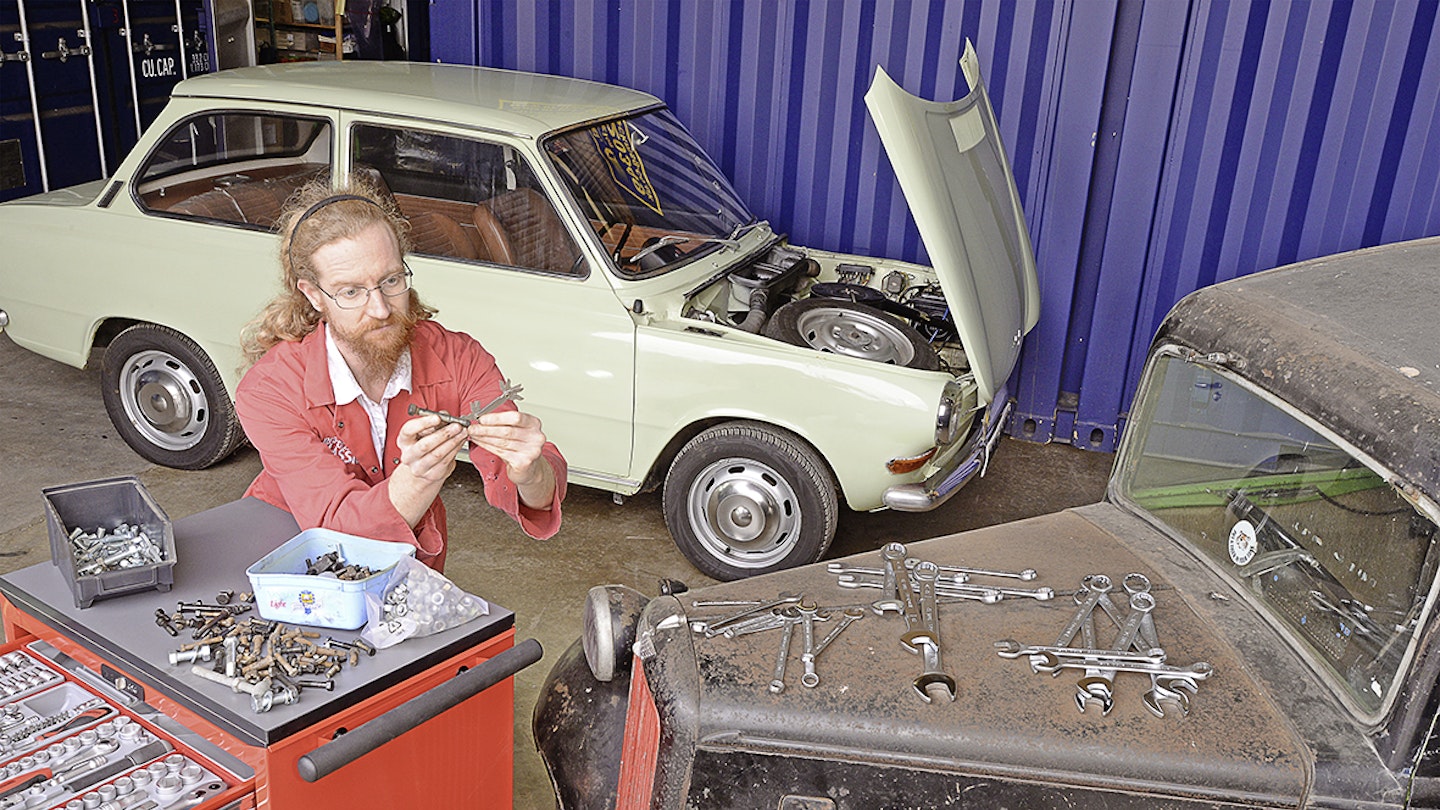
Answer: We’ll start with threads. Most continental and later British classics use metric. There are two common thread pitches – standard and fine.
If the thread is specified simply as M6, it’s a standard pitch. Standard pitch would be fully written as M6 x 1.0. Fine would be M6 x 0.8. Note, though, that the pitch varies with the thread diameter – so a standard M8 thread is M8 x 1.25 and a fine thread M8 x 1.0. Extra-fine threads also exist, but these are rare. The pitch number gives the distance in millimetres between individual threads – ie, 1.0mm or 0.8mm.
A single turn of the nut advances it less far down the bolt on a fine thread. In effect, this is a form of gearing. A fine thread is good for precise adjustment of things like valve clearances. It also allows a greater clamping force between the nut and bolt for any given torque, which is useful for crankshaft bearing caps and similar.
Non-metric threads tend to conform to American or British systems. American systems are UNC (standard-coarse); UNF (fine) and UNEF (extra-fine). Pitch numbers increase as threads gets finer – eg, ⅜-16 UNC; ⅜-24 UNF; ⅜-32 UNEF.
British systems are found in older classics. A standard-coarse pitch is BSW or ‘British Standard Whitworth’ thread. Also common is BSF ‘British Standard Fine’. There isn’t usually a pitch number quoted in the designation – eg, ⅜ BSF. In both the British and American examples quoted, the ⅜ refers to the diameter in inches.
Most UNC threads roughly correspond to BSW, but they have a different profile.
Tiny fasteners in instruments and precision components might be miniature sizes of these – or they might be BA (British Association) sizes. They’re numbered 0BA to 16BA.
Spanners and sockets are a bit of a headache if you work on a combination of British, American and mainland European classics. You’ll ideally need a set for each system. There are some useful overlaps, but there are also some dangerous ones that can catch out the unwary. A 13mm spanner may appear to fit snugly on a rusty ½in nut, but applying moderate torque will round it off and call for a drill or angle grinder instead.
Brass fasteners are very soft and used on instruments and other non-stressed assemblies. Brass is also used for exhaust manifold nuts, as light corrosion locks it solidly to the steel studs and its softness means it can be carefully unscrewed from rusty threads. Stainless steel fasteners are popular for things that are on show, but their tensile strength is too low for critical applications. Never use them on suspension, steering or brake parts.
High-tensile steel is the usual default choice. It’s usually zinc-coated for corrosion resistance, but it’s still wise to coat under-car threads with copper grease. There are three popular tensile strengths, usually marked on the heads of bolts and sometimes stamped into nuts.
The normal grade is 8.8, while 10.9 and 12.9 are respectively stronger. Although 8.8 is fine for most applications, consider erring on the side of caution for critical suspension parts.
Older British fastenings are graded by letter, from P to Z. Class T corresponds to 8.8, V to 10.9 and Y to 12.9.
